The correct dartboard distance is 7 feet 9 1/4 inches (2.37 meters) from the face of the board to the oche (the throwing line), and the bullseye should be 5 feet 8 inches (1.73 meters) from the floor. In this comprehensive guide, we’ll delve into the specifics of setting up your dartboard distance, variations, measuring techniques, and even address common FAQs to ensure a fair and enjoyable game.
⚠️ Still Using Pen & Paper (or a Chalkboard)?! ⚠️
Step into the future! The Dart Counter App handles all the scoring, suggests checkouts, and tracks your stats automatically. It's easier than you think!
Try the Smart Dart Counter App FREE!Ready for an upgrade? Click above!
Understanding the Official Dartboard Distance
Adhering to the official dartboard distance is crucial for both casual and competitive play. These measurements are standardized by organizations like the World Darts Federation (WDF) and the Professional Darts Corporation (PDC) to ensure fairness and consistency across all games and tournaments. Sticking to these official distances and height ensures your game is as accurate as possible, and allows you to use skills learnt at home to play against others anywhere in the world.
There are two key measurements to consider when setting up your dartboard distance:
- Horizontal Distance: This is the 7 feet 9 1/4 inches (2.37 meters) measurement from the face of the dartboard (specifically, the vertical plane extending from the front of the board) to the throwing line, also known as the oche or toe line.
- Vertical Height: This refers to the height of the bullseye (center of the dartboard) from the floor, which should be 5 feet 8 inches (1.73 meters).
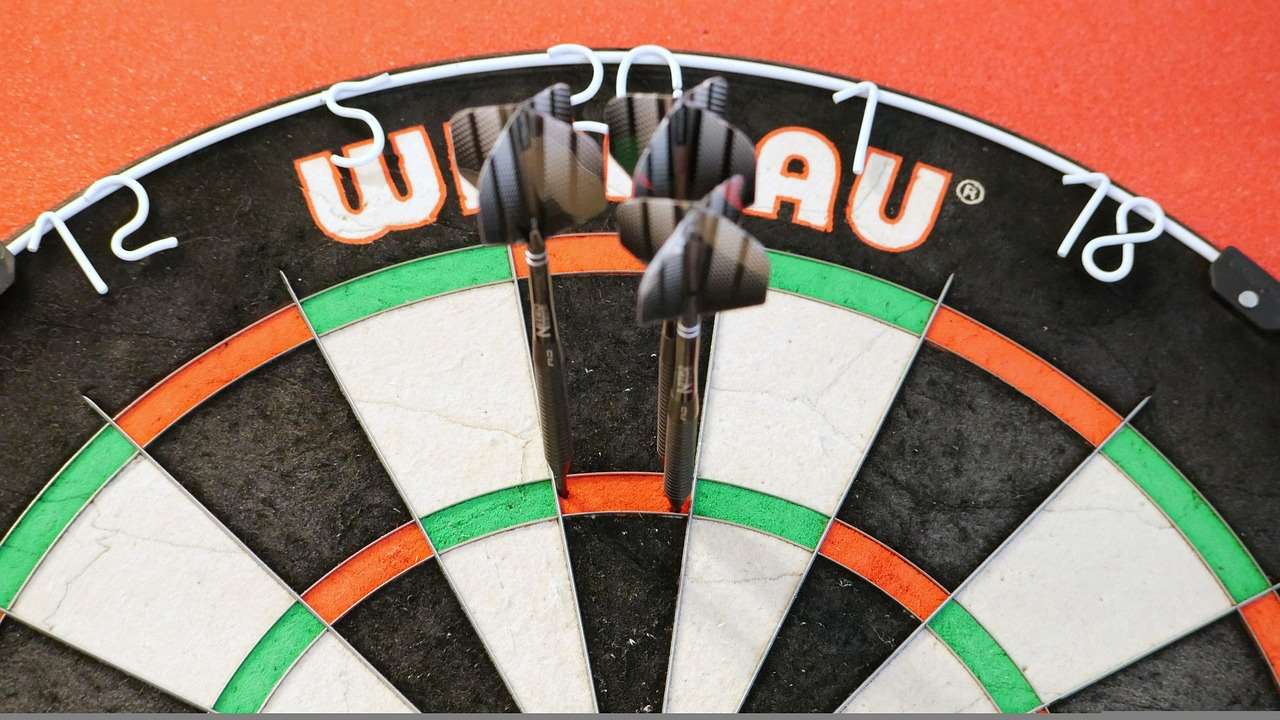
Why is the Dartboard Distance Standardized?
Standardization is paramount in darts for several reasons:
- Fairness: It ensures that all players, regardless of location, are competing under the same conditions.
- Skill Development: Consistent distances allow players to develop and refine their throwing techniques accurately.
- Professionalism: In professional tournaments, standardized measurements are essential for maintaining the integrity of the sport.
- Consistency: If you are playing darts online, it allows for online competition with real-world competitions.
Step-by-Step Guide to Measuring Your Dartboard Distance
Accurate measurement is vital for setting up your dartboard distance correctly. Here’s a step-by-step guide:
- Mount the Dartboard: First, securely mount your dartboard on a wall, ensuring the bullseye is exactly 5 feet 8 inches (1.73 meters) from the floor. Use a level to ensure the board is perfectly vertical. Improper mounting can affect your game.
- Mark the Oche Position: Use a measuring tape to measure 7 feet 9 1/4 inches (2.37 meters) horizontally from the face of the dartboard. Mark this point on the floor. This will be your throwing line.
- Establish the Oche: Place a raised line or a clearly defined marker (the oche) at the marked point. This could be a piece of wood, tape, or a commercially available oche.
- Double-Check: Always double-check your measurements to ensure accuracy. Even a slight discrepancy can impact your throwing technique.
Tools You’ll Need:
- Measuring Tape (preferably metric and imperial)
- Level
- Pencil or Marker
- Oche (throwing line marker)
Variations in Dartboard Distance
While the official dartboard distance remains constant in professional and sanctioned games, some variations exist, particularly in informal or recreational settings. These variations can affect gameplay and strategy.
Soft-Tip Darts vs. Steel-Tip Darts
In general, both soft-tip and steel-tip darts use the same dartboard distance measurements. However, some leagues or casual games involving soft-tip darts might have slightly different rules or modified distances. Always clarify the rules before playing.
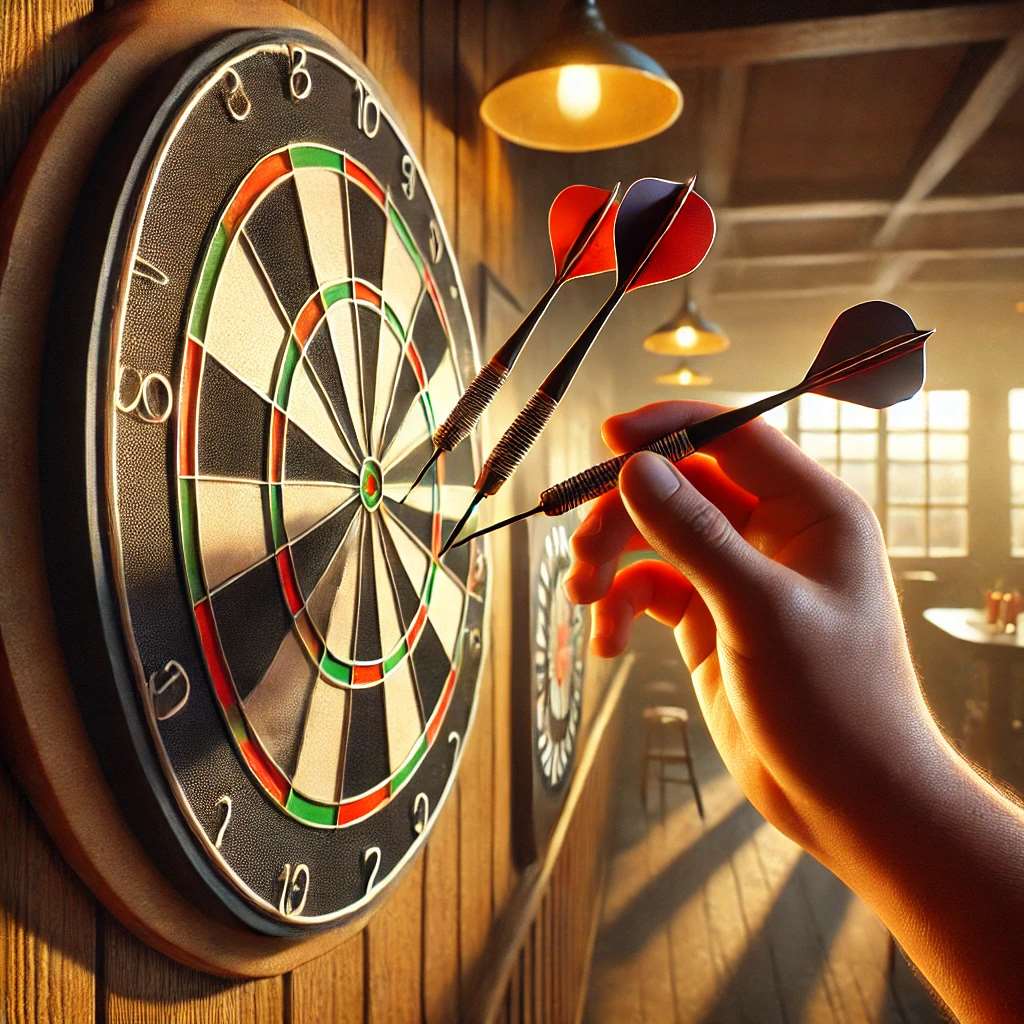
Personal Preferences and Adjustments
Some players may slightly adjust the dartboard distance based on their personal preferences or throwing style. While this is acceptable in casual play, it’s essential to adhere to the official measurements in any competitive setting.
Adjusting for Different Skill Levels
For beginners or younger players, you might consider temporarily shortening the dartboard distance to make the game more accessible. As their skills improve, gradually move the oche back to the official measurement.
Common Mistakes When Setting Up Dartboard Distance
Several common mistakes can lead to incorrect dartboard distance setups:
- Inaccurate Measurements: Using a poorly calibrated or inaccurate measuring tape can result in incorrect distances.
- Ignoring the Face of the Board: Measuring from the wall behind the dartboard instead of the face can lead to a shorter-than-regulation distance.
- Incorrect Bullseye Height: Failing to ensure the bullseye is at the correct height can throw off your aim and technique.
- Unlevel Dartboard: A tilted dartboard can make accurate measurements impossible and affect the flight of your darts. Ensure proper dartboard installation.
- Neglecting the Oche: Using an inconsistent or poorly defined oche can lead to variations in throwing distance.
Avoiding these common errors ensures a fair and enjoyable game for everyone.
The Impact of Dartboard Distance on Gameplay
The dartboard distance directly affects your gameplay. It determines the trajectory of your darts, the amount of force you need to apply, and your overall accuracy.
Throwing Technique and Strategy
A consistent dartboard distance allows you to develop a reliable throwing technique. You can practice and refine your stance, grip, and release to achieve greater accuracy. Strategic decisions, such as aiming for specific targets, also become more predictable with a standardized distance.
Adjusting Your Throw
If you’re accustomed to playing at a non-standard dartboard distance, transitioning to the official measurement may require adjustments to your throw. Be prepared to practice and refine your technique to maintain accuracy.
Mental Game
Knowing that you’re playing at the correct dartboard distance can boost your confidence and mental focus. Consistency and fairness are essential components of a good mental game in darts.
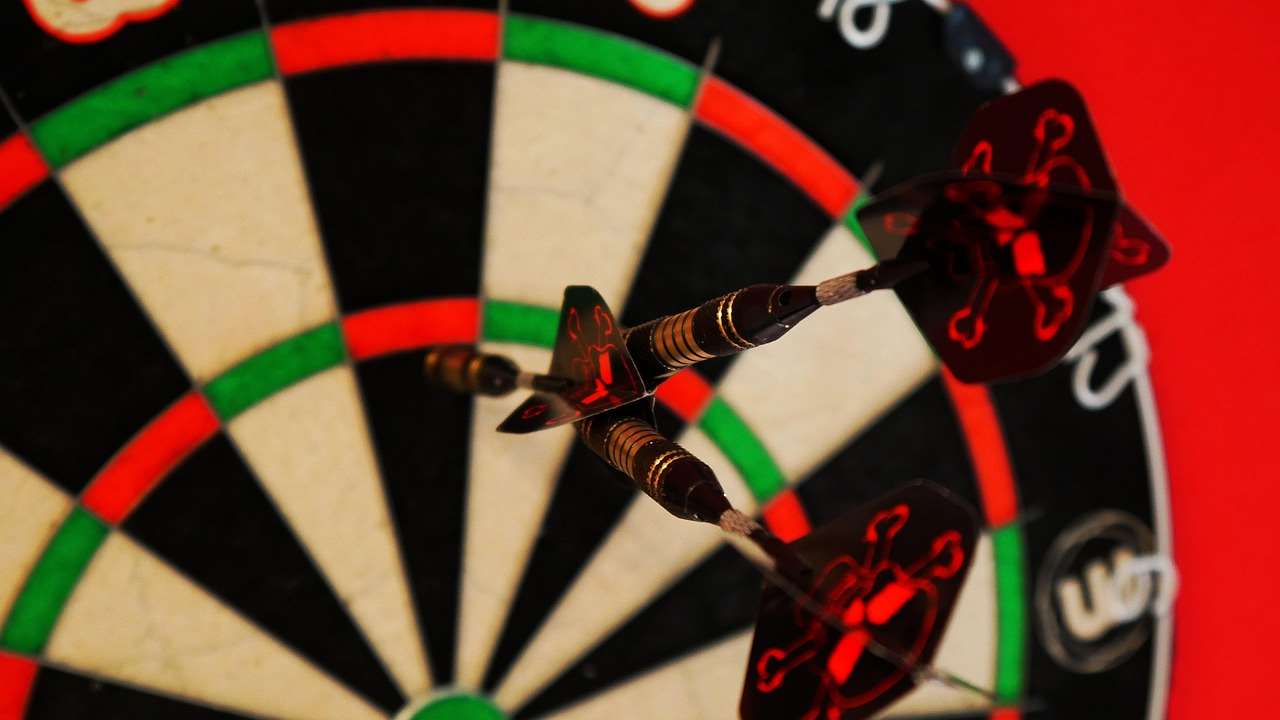
Advanced Tips for Optimizing Your Dartboard Setup
Beyond the basic measurements, several advanced tips can help optimize your dartboard setup.
Lighting
Proper lighting is essential for clear visibility of the dartboard and targets. Invest in a good dartboard lighting system that provides even illumination without glare. Good lighting helps you to have the best throw possible.
Surround
A dartboard surround protects your wall from stray darts and provides a professional-looking finish to your setup. Choose a surround made of durable material that can withstand repeated impacts.
Flooring
Consider placing a mat or carpet in front of the dartboard to protect your floor from dropped darts and provide a comfortable standing surface.
Regular Maintenance
Regularly rotate your dartboard to distribute wear evenly. Clean the board with a soft brush to remove dust and debris. Replacing your dartboard when needed is a worthwhile investment.
Frequently Asked Questions About Dartboard Distance
Here are some frequently asked questions about dartboard distance:
What happens if the dartboard distance is slightly off?
Even a small deviation from the official dartboard distance can affect your accuracy and throwing technique. It’s always best to adhere to the standardized measurements for fairness and consistency.
Does the dartboard distance change for different dart weights?
No, the dartboard distance does not change based on the weight of the darts. The official measurements remain the same regardless of dart weight.
Can I adjust the dartboard distance for children or beginners?
Yes, in casual or recreational settings, you can temporarily shorten the dartboard distance for children or beginners to make the game more accessible. However, always use the official measurements in competitive play.
Where can I find the official rules for dartboard distance?
The official rules for dartboard distance are available on the websites of darting organizations such as the World Darts Federation (WDF) and the Professional Darts Corporation (PDC).
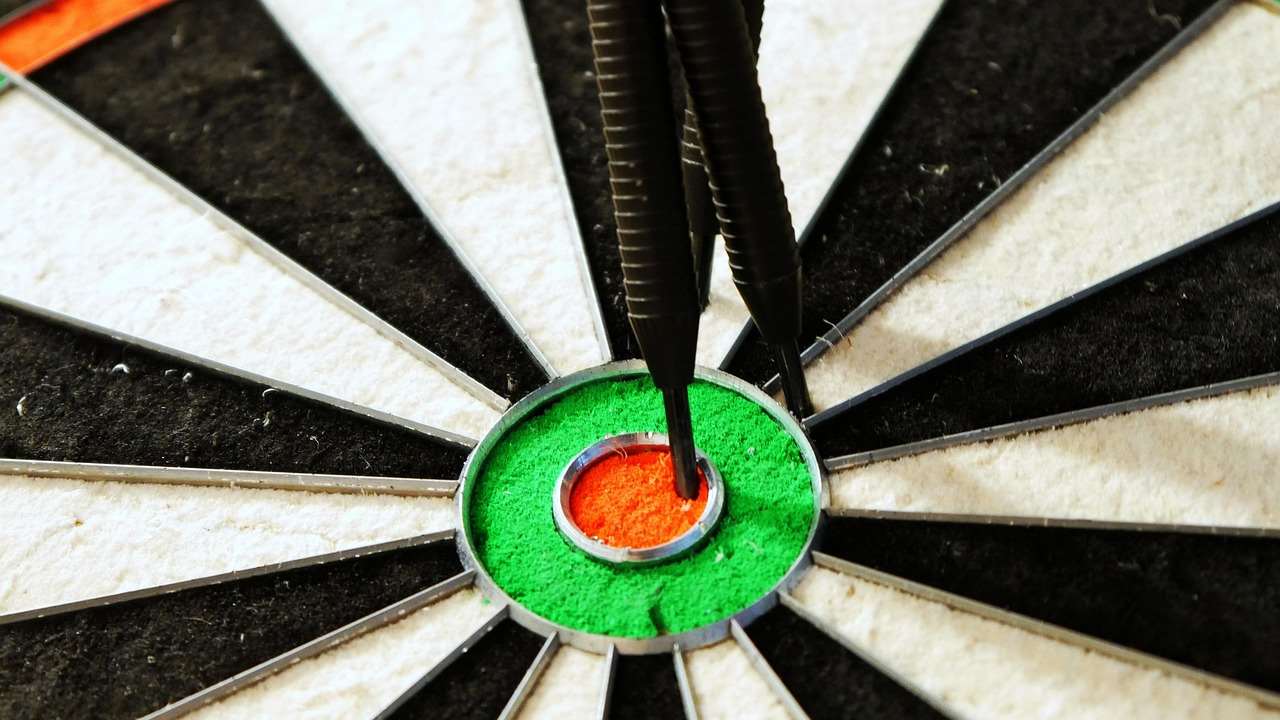
Does the surface I am throwing from matter?
The surface you throw from can have an impact. If you throw from carpet you might find the dart hits the pile which changes the angle. Using a proper floor can improve your throw.
Choosing the Right Darts for Your Dartboard Distance
While the dartboard distance is fixed, the type of darts you use can greatly influence your performance. Consider the following factors when selecting your darts:
Weight
Darts typically range in weight from 16 to 30 grams. Lighter darts are generally easier to throw with less force, while heavier darts may offer more stability and control. Experiment to find the weight that suits your throwing style.
Grip
The grip of your darts is crucial for maintaining control and consistency. Choose a grip that feels comfortable and provides adequate traction. Common grip types include knurled, ringed, and smooth.
Shape
Darts come in various shapes, such as torpedo, barrel, and straight. The shape affects the dart’s balance and aerodynamics. Try different shapes to see which one feels most natural in your hand and flies best for you. If you’re looking for new darts, check out target darts bolide.
Material
Darts are commonly made from materials like brass, nickel silver, and tungsten. Tungsten darts are denser and allow for a slimmer barrel, which can improve grouping and scoring potential. Brass darts are often cheaper.
Practicing Your Throw at the Correct Dartboard Distance
Consistent practice at the official dartboard distance is essential for improving your skills. Here are some tips to make your practice sessions more effective:
Warm-Up
Always warm up your arm and shoulder muscles before starting a practice session. This can help prevent injuries and improve your throwing accuracy.
Focus on Technique
Pay attention to your stance, grip, and release. Focus on maintaining a consistent throwing motion. Break down your throw into steps, and ensure you master each stage.
Target Practice
Practice aiming for specific targets on the dartboard, such as the treble 20, bullseye, and doubles. Use drills to improve your accuracy on these crucial targets. Many people want to practice for a darts three in the bed competition, so this would be a good area to focus on.
Track Your Progress
Keep a record of your scores and progress over time. This can help you identify areas for improvement and stay motivated.
Mental Preparation
Practice mental visualization techniques to improve your focus and confidence. Imagine yourself hitting your targets consistently. This can reduce anxiety and improve your concentration.
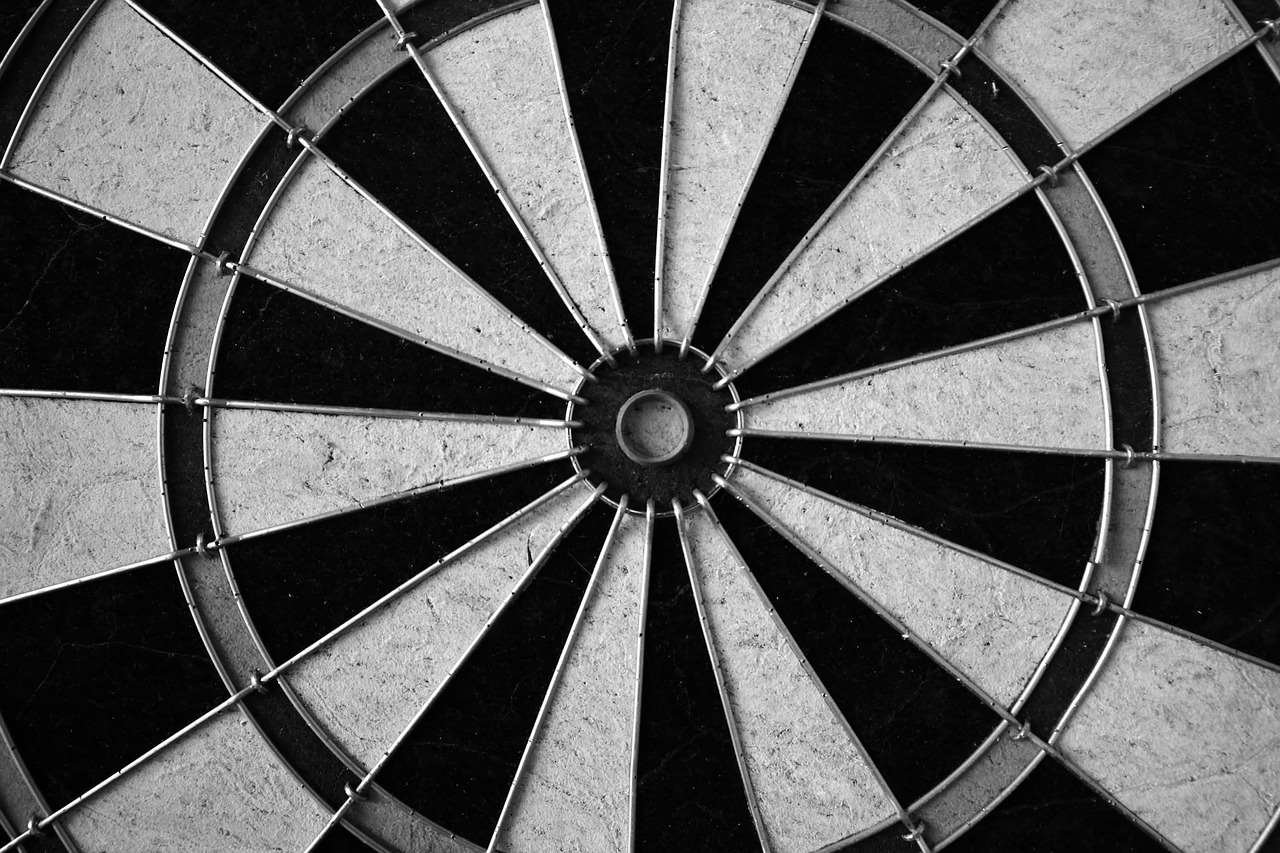
Conclusion
Setting up the correct dartboard distance is fundamental to enjoying and excelling at the game of darts. By adhering to the official measurements, avoiding common mistakes, and optimizing your setup, you can create a fair and enjoyable playing environment. Remember to practice consistently, focus on your technique, and choose the right darts for your style. So, grab your darts, measure that dartboard distance, and get ready to improve your game. Looking to keep score? Why not try the Digital dart score app!
Hi, I’m Dieter, and I created Dartcounter (Dartcounterapp.com). My motivation wasn’t being a darts expert – quite the opposite! When I first started playing, I loved the game but found keeping accurate scores and tracking stats difficult and distracting.
I figured I couldn’t be the only one struggling with this. So, I decided to build a solution: an easy-to-use application that everyone, no matter their experience level, could use to manage scoring effortlessly.
My goal for Dartcounter was simple: let the app handle the numbers – the scoring, the averages, the stats, even checkout suggestions – so players could focus purely on their throw and enjoying the game. It began as a way to solve my own beginner’s problem, and I’m thrilled it has grown into a helpful tool for the wider darts community.